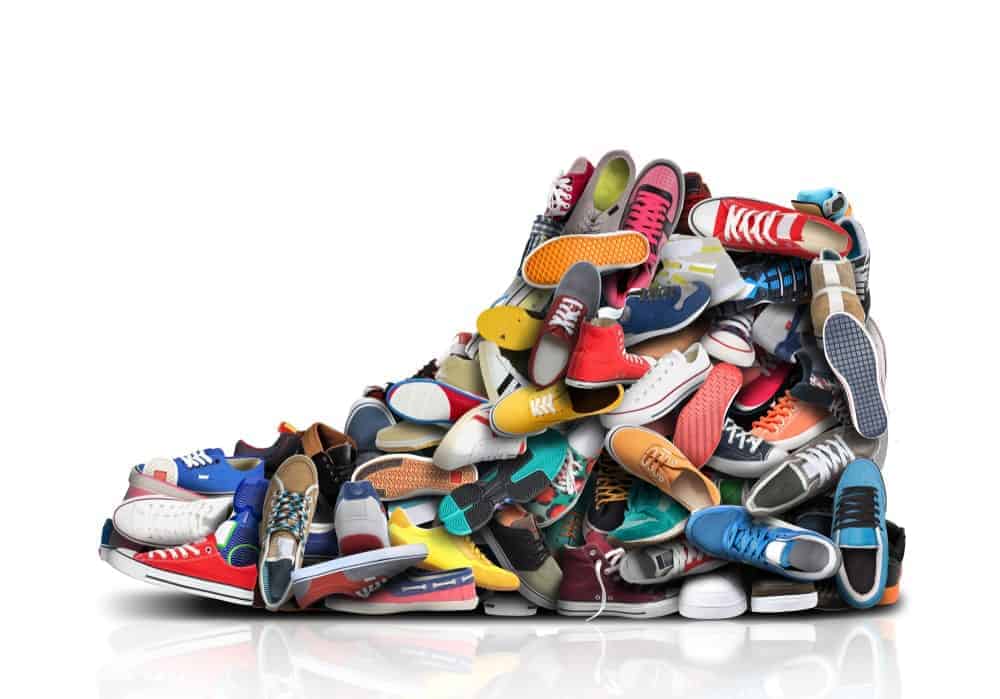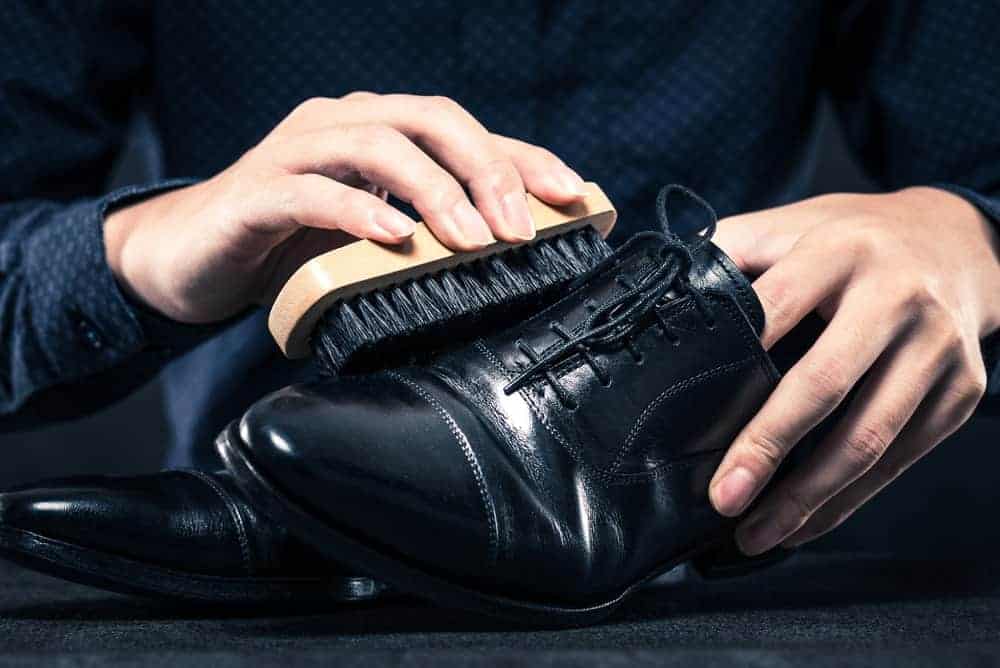Running is a popular sport, and the only equipment needed are the right shoes. Running shoes vary based on your foot, gait, and terrain. You'll also need to consider your goals. Shoes for competition are different than those worn for training. You can choose special shoes for recovery as well.
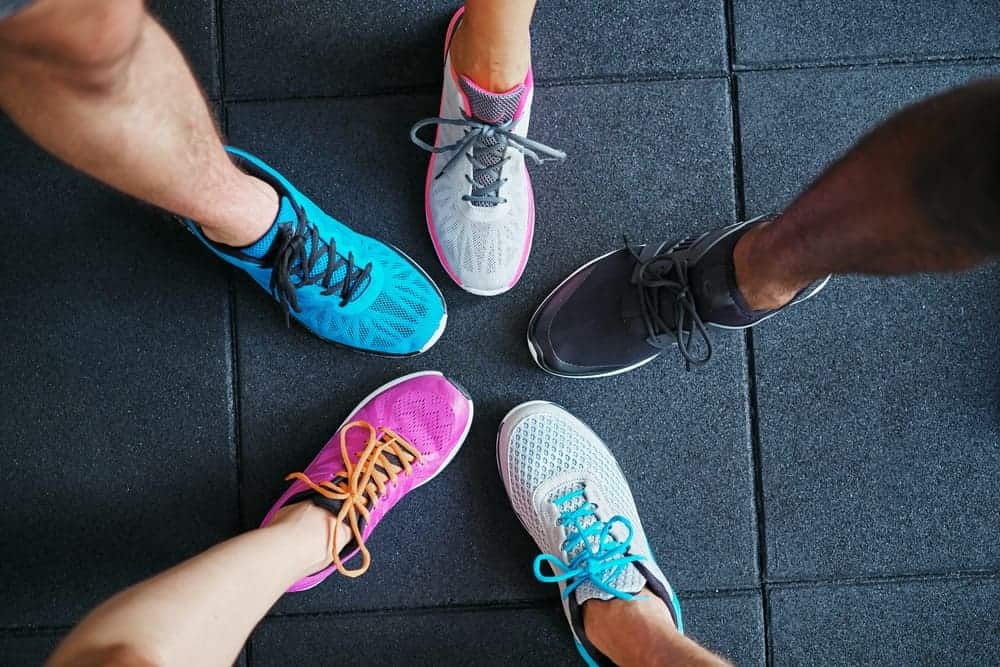
Running is a great sport. It requires very little equipment, and you can do it nearly anywhere. In fact, all you really need is a good pair of running shoes.
However, that’s where things get complicated. There are many types of running shoes, and the choices can be overwhelming, particularly in the beginning. The right, or wrong, shoes can make or break your running experience.
Four out of five runners are wearing the wrong shoes for their foot and running style, which increases the risk of injury.
We’ll look at what sets running shoes apart from other athletic shoes, who needs running shoes, and the types of running shoes.
Contents
- Running Shoe vs. Other Athletic Shoes
- Foot Strike
- Key Considerations
- Running Shoe Types By Terrain
- Pronation Type
- Support and Cushioning
- Differences Between Men’s and Women’s Running Shoes
- Minimalist or Barefoot Shoes
- Running Shoes for Women and Men FAQs
- What if more women designed running shoes?
- What should women look for when choosing a running shoe?
- What should men look for when choosing a running shoe?
- Can you wear shoes for the opposite gender?
- What’s the sizing equivalent for a 7 men’s shoe in women’s?
- Can some running shoes slow you down?
- What is gait and why does it matter?
- Do women or men win more races?
- How do women run differently?
- How do I know when it’s time for new running shoes?
- What is plantar fasciitis?
- Are running shoes good for walking?
- Do running shoes stretch?
Running Shoe vs. Other Athletic Shoes
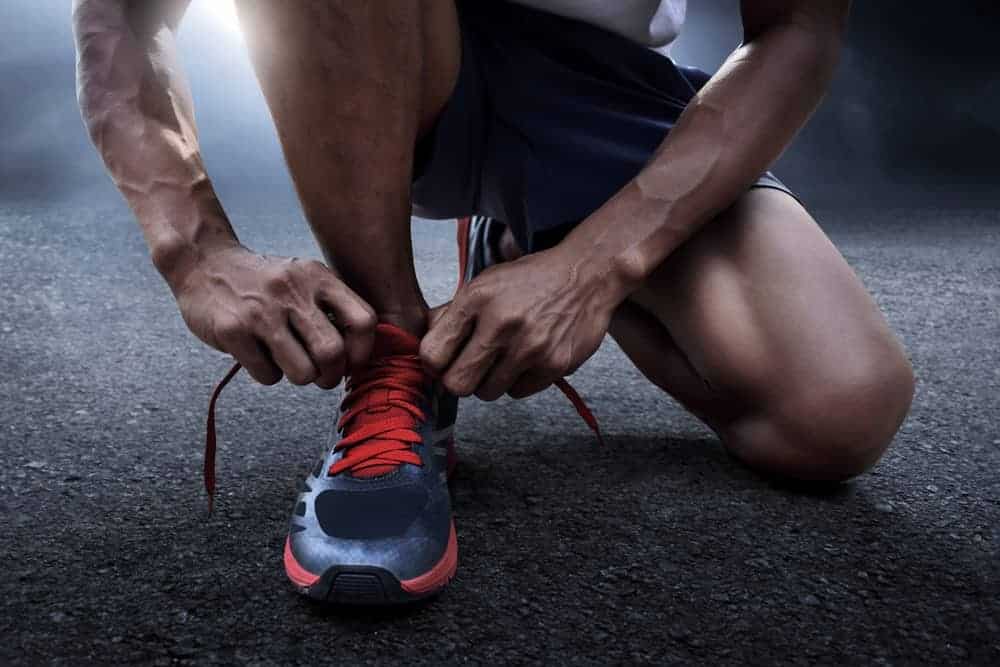
Are running shoes really different from other athletic shoes, or is it just a marketing gimmick? Generally, shoes are designed for a specific sport or situation. Walking shoes, for example, have plenty of cushioning but less support and flexibility than running shoes. Tennis shoes are designed for side to side motion while running shoes are designed for forward motion.
Do I really need running shoes?
This is one of the most common questions about running. While shoes aren’t a requirement for running, they are recommended for several reasons.
They protect your feet from debris on the ground that could bruise or cut your sole. They provide cushioning which puts less pressure on your bones and joints. They provide traction and support in the areas you most need it.
Other types of athletic shoes aren’t a good choice for running, but they will work in a pinch. However, you’ll never know what a difference the right shoe can make until you find the right shoe for you.
Foot Strike
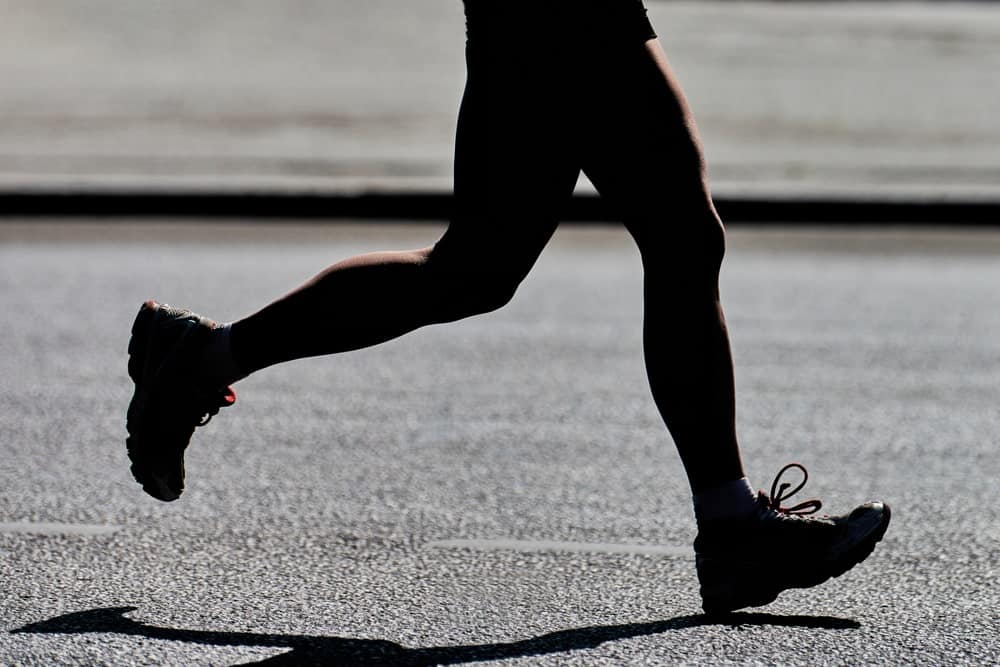
Foot strike is a key consideration when you are choosing running shoes. Foot strike is the area of your foot that hits the ground first and therefore absorbs the most shock.
You can get an idea of your foot strike by looking at your favorite pair of athletic or running shoes and checking the wear pattern. If the front of the sole is most worn, you are a forefoot runner. If the middle and sides are worn, you are likely a midfoot striker. If the heel is worn, you are a heel striker.
If checking a current pair of runners isn’t an option, get a friend to film you as you run. You can then look at the video and see which part of your foot strikes first. You can also get an analysis at a running store, which will give you the most accurate information.
Key Considerations
Before you settle on a specific type of shoe, you should know what you are looking for in a shoe. Are you seeking speed, distance, or comfort?
If speed is what you are looking for, a lightweight shoe is the best bet. However, these usually offer less support and may have less cushioning.
A shoe that’s designed for distance running will have more support and cushioning to minimize fatigue and shock over the course of the run.
Comfort is achieved with cushioning, but this can add more weight to the shoe. Depending on the design, it may offer less support as well.
In addition to what you are looking for, you’ll need to decide the purpose of the shoes. Training shoes are designed for training. Running trainers are the pair you’ll grab to go on a daily run.
Competition shoes are reserved for actual racing and a few training sessions to prepare for a big race.
Recovery shoes are great for recovering from an injury or after a hard training session or race. These will have extra cushioning and support.
Most experts recommend having at least two pairs of running shoes. This can extend the life of your shoes and allow you more flexibility to customize the shoe based on what you need at that time.
Running Shoe Types By Terrain
There are three types of terrain running shoes are designed for.
The types are:
- Road
- Trail
- Hybrid
Road Running Shoes
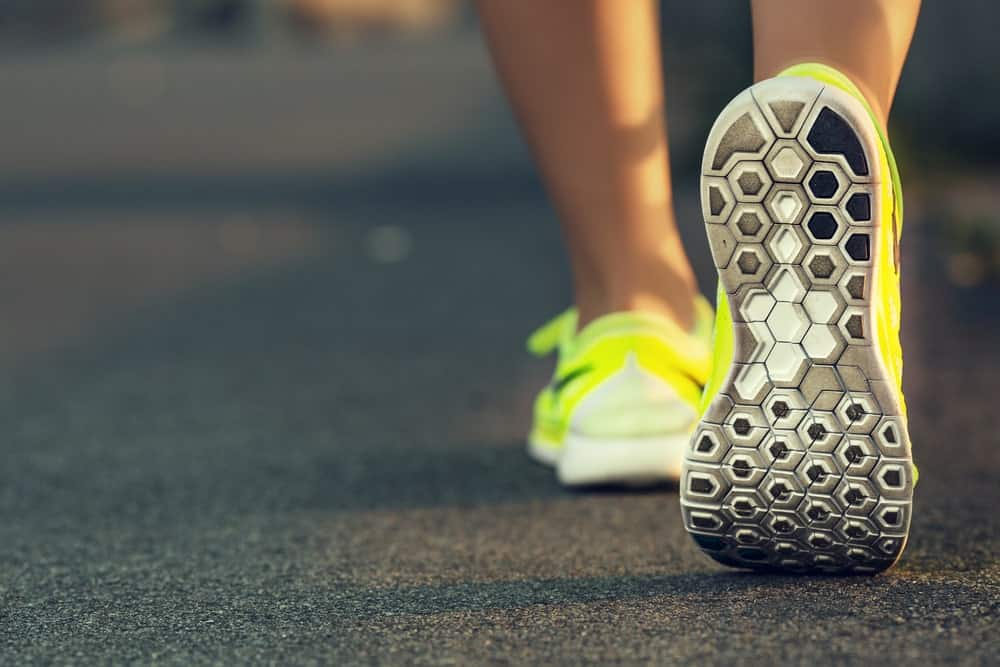
Road running shoes are designed for running on the road, or pavement, as the name suggests. The majority of runners run on roads, sidewalks, or other types of hard paved surfaces. While these hard surfaces are the most popular place to run, it does put more pressure on your body.
Running shoes are designed to absorb the shock of your feet hitting concrete, so they will have more cushioning than other types.
Most road running shoes have a flexible sole so your foot can flex in its natural manner when you run for a more even gait.
They are designed to provide traction on pavement. They typically have a blown rubber outsole that’s harder than other types. This provides traction and also helps your shoes last longer.
Trail Running

A trail running shoe is designed for running on trails. They are ideal for softer surfaces, including grass, dirt, and mud. A trail shoe is also designed to support your feet when running on uneven terrains like rocks and roots.
The sole of trail runner shoes will be softer and the tread pattern is more aggressive. This provides the traction you need on trails.
They usually have a toe and heel plate to provide extra durability and water protection.
You’ll want the shoes to fit tight around the midsole and have a wide toe box. Spreading your toes gives you a wider base for traction and stability, and a snug midsole keeps the shoe in place.
Hybrid
Hybrid shoes are a cross between trail and road running shoes. The concept is similar to that of cross trainers, which are designed to be used for many sports and activities. Generally, shoes can do one thing well or a lot of things well enough. Cross trainers are great if you play different sports on a regular basis, but they aren’t as good as shoes designed for what you are doing.
How do hybrids perform? They are relatively new, so that still remains to be seen. However, the similarities between the types of shoes make it easier to create one that will meet the needs of both terrain types.
Pronation Type
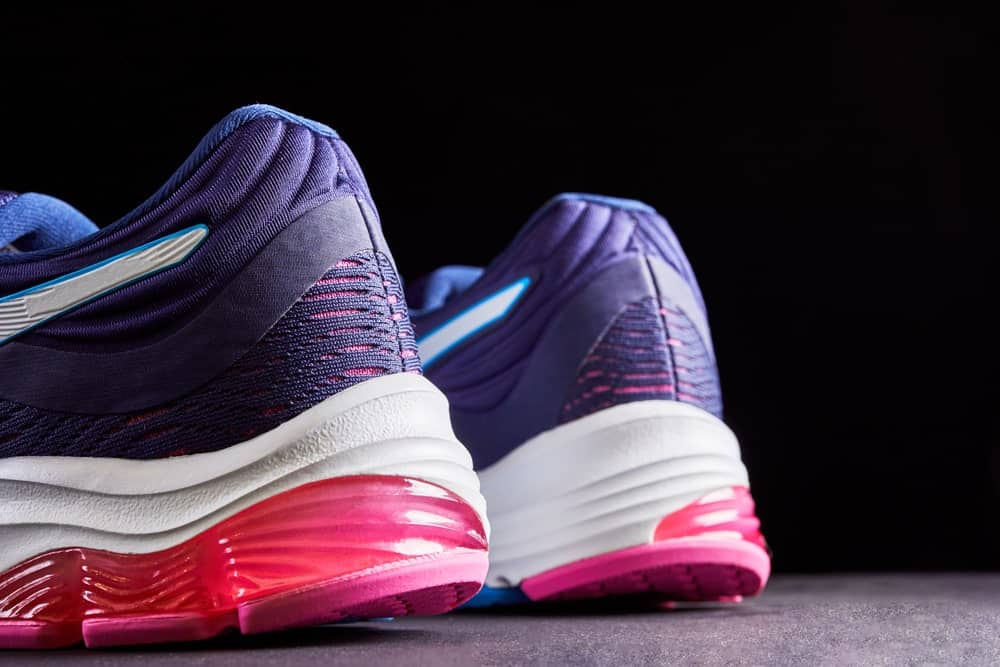
Pronation is the amount of side-to-side movement that occurs in your foot when you run. There are three pronation types. The types are:
- Under pronation
- Neutral pronation
- Overpronation
When your foot strikes the ground, it naturally rolls inward. This helps absorb the shock of the strike. However, it can roll too much or too little, which increases your risk of certain injuries.
You can get an idea of your pronation by checking the wear pattern on your shoes and examining your aches. However, the best way to determine your pronation is professional gait analysis.
Under Pronator (Supinator)
If you are an under pronator, you have a high arch. The outside of the heel strikes first, and there’s little or no pronation. This puts shock on the calf muscles.
Wear will occur on the outside edge of the shoe.
Under pronators are at a higher risk of:
- Plantar fasciitis
- Shin splints
- Ankle strain
Neutral Pronator (Normal)
The foot strikes on the outside of the heel and the ankle pronates, or rolls inward to distribute the shock of the strike. Normal pronators have average arches, and push off with the front of the foot. About 80% of running shoes are designed for neutral runners.
Wear will follow an S-shaped pattern, beginning with the outside heel and ending at the big toe. The wear pattern will be relatively even all the way around.
Normal pronators are at a lower risk of injury, but not immune to running injuries.
Over Pronator
Over pronators have a low or flat arch. This causes them to overpronate. The weight moves inward too far, putting pressure on the inside edge of the foot instead of the ball of the foot. The big and second toe is used for push-off.
Wear will occur near the big toe, the inside of the heel, and the ball of the foot. There will be more wear on the inner sole.
Over pronators are at a higher risk of:
- Shin splints
- Plantar fascitis
- Bunions
- Heel Spurs
Support and Cushioning
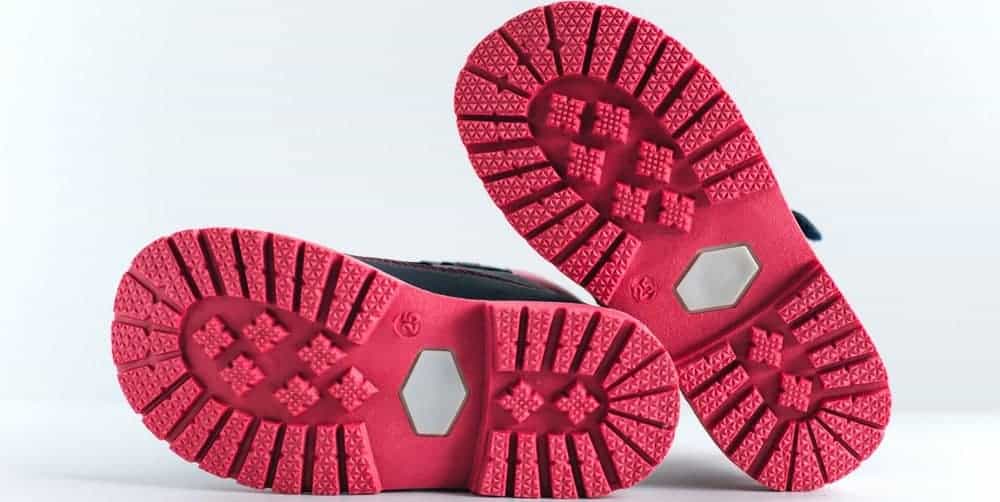
There are three types of running shoes based on the three types of pronation. These are:
- Maximum support/Motion control
- Structured cushioning/ Stability
- Cushioned
Maximum Support for Over Pronators
Maximum support or motion control shoes are designed to provide extra support to prevent overpronation. They have higher density material on the inner midsole known as medial posts. This stops the shoe from collapsing when the force from pronation is placed on it. They are built on a flat last to provide maximum ground contact for stability.
Structured Cushioning For Neutral Pronators
A stability shoe is designed for those who are neutral pronators. They provide less stability than motion control shoes while still giving the support needed during running. They typically have a slight arch and a reinforced midsole.
Cushioned for Under Pronators
Under pronators require extra cushioning to provide more shock absorption. Since they have higher arches, the shoe is designed to curve to support the arch. These shoes are light, flexible, and provide the most cushioning.
Differences Between Men’s and Women’s Running Shoes
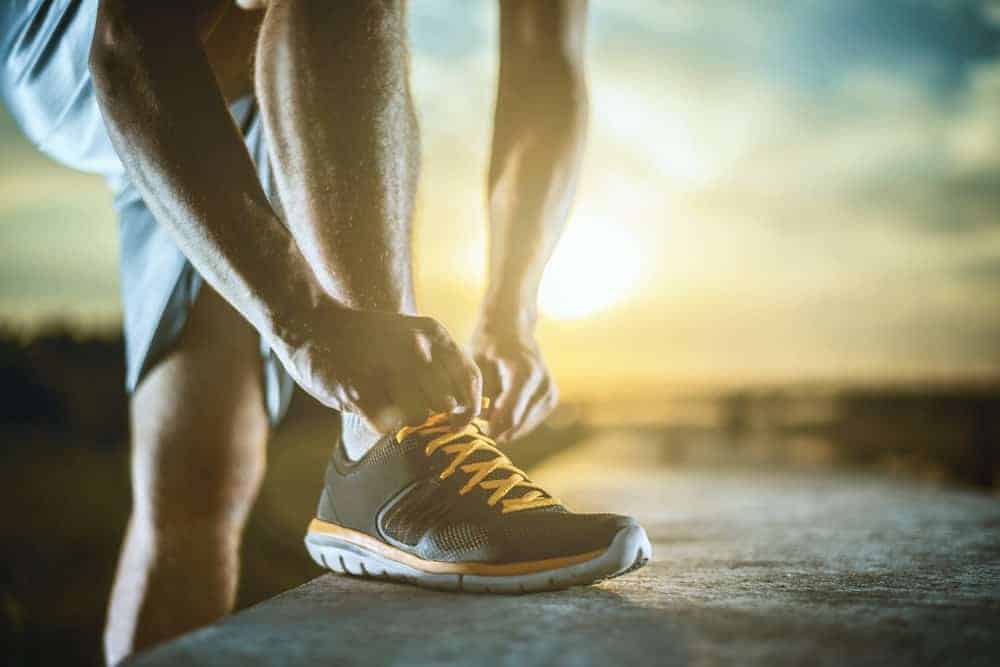
Men’s feet look very different from women’s feet. The differences don’t stop there, either. The entire lower half of the body is interconnected. A woman has wider hips, which also makes a woman’s gait different than a man’s.
There are, or should be, some major differences between men’s and women’s running shoes. However, when it comes to athletics, it seems it’s still a man’s world.
Lasts and Fit
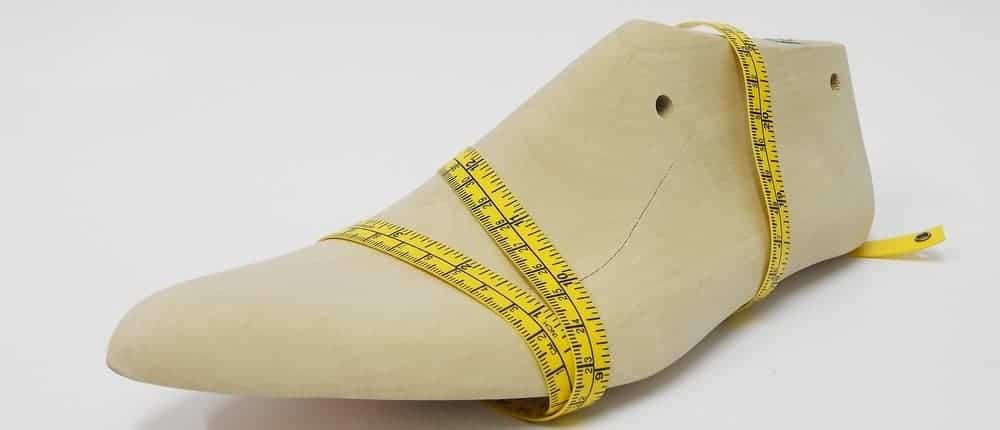
Lasts are essentially a model of a foot. Shoes are made based on the last, and the last gives the shoe its shape. You would expect a women’s shoe to be built using a women’s last, but this isn’t always the case.
Some companies use a unisex last. Some won’t comment on the gender of their last. I’ll leave the conclusions drawn from that up to you. Others do use a woman’s last.
So why does it matter? Because feet are shaped differently based on gender.
Women’s feet are generally flatter, wider at the forefoot, and narrower at the heel. Men’s feet have a higher arch and are skinnier.
Studies on women’s running shoes show that they are 70% tighter in the forefoot than men’s, and 30% wider at the heel. In simple terms, the shoes don’t fit a woman properly and seem to be designed for the male shaped foot.
Size Matters

Of course, sizes also vary between genders. A size 9 in women’s shoes is completely different than a size 9 in men’s. Men’s running shoes usually range between 8-13, and women’s range from 6-11.
Both are available in medium, wide, and extra-wide.
Men’s widths are:
- D – Medium
- 2E – Wide
- 4E – Extra wide
Women’s widths are:
- B -Medium
- D – Wide
- 2E -Extra wide
Do You Have to Choose Shoes Based on Gender?

Generally, shoes designed for your gender should provide the best fit. However, this isn’t always the case. If you are a woman with narrower feet, you may find a man’s shoe fits you better. If you are a man with a wider foot or low arch, you may prefer a woman’s shoe.
Size plays a role as well. If you are a man with small feet or a woman with large feet, you may have a hard time finding your size.
There’s no rule that says you have to stick to the shoes designed for your gender. However, determining the correct size and fit becomes more complicated, because most store employees aren’t trained in the conversions.
The easiest way to find the right fit is to have your feet measured at a running shoe store that bases its recommendations on measurements instead of gender. They should know the standard conversions, and when shoes of the opposite gender might be a better choice. They can then narrow down which shoe is right for you based on these measurements.
Q Angle and Pronation
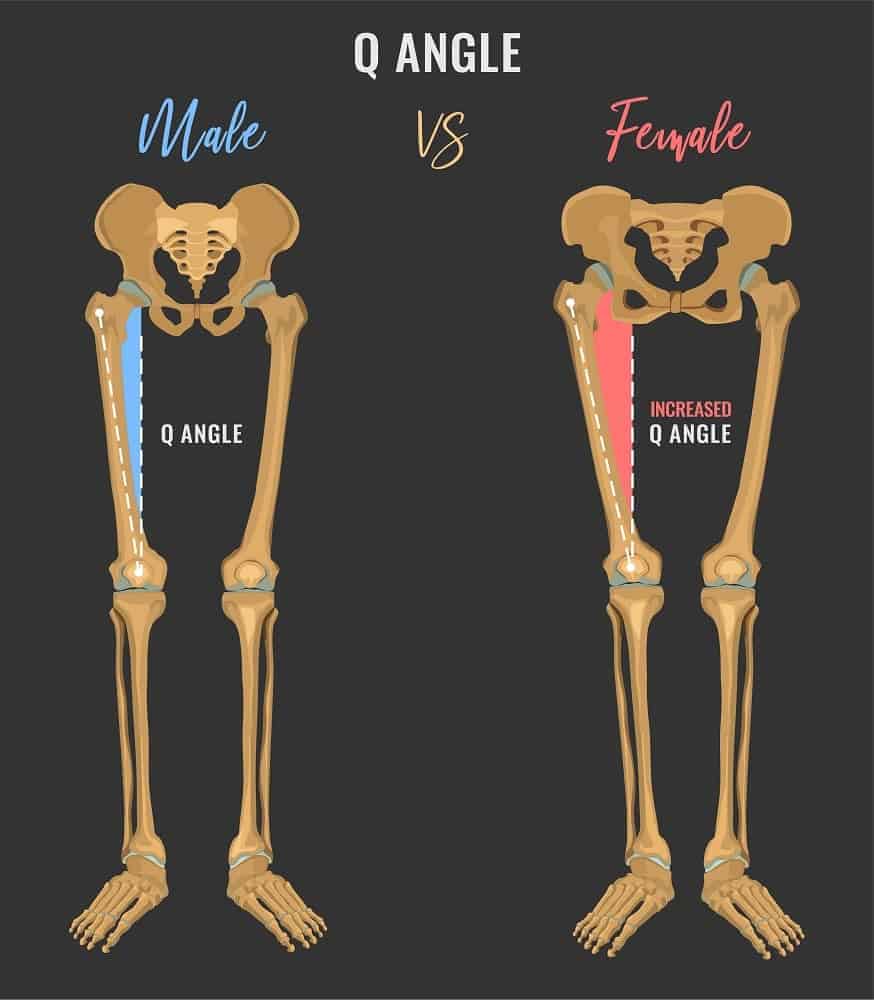
Pronation is another big difference between men and women. Women have wider hips, which creates a larger q angle.
The q angle is determined by drawing a line that angles from the anterior superior iliac spine to the midpoint of the patella. Then a vertical line extending from the tibial tubercle to the femoral head is drawn.
In simple terms, the q-angle goes from the top of the pelvis to the midpoint of the knee.
Men typically have one type of pronation mentioned earlier. Women, however, tend to under pronate and over pronate.
A study of women’s shoes with more than 300 miles on them noted more than 80% had significant wear at the lateral heel area and wear at the lateral forefront. They termed the pattern corkscrew.
At heel strike, a woman’s foot rolls outward, causing supination or under pronation. As they move to take the next step, the weight shifts heavily to the inside of the foot, called over pronation.
Women are at a higher risk of knee injuries because of the higher q angle. Shin splints are also more common because less force is transferred to the muscle when they push off.
Women typically compensate for this with movements that put less pressure on the knee. Over time, this can lead to other injuries in female runners.
Shoes For Female Q angle
The good news is science continues to learn the differences between how men and women run, and shoe manufacturers are working to meet the needs of female athletes.
Several shoe companies have designed shoes or insoles specifically to address women’s q angles. Some of these companies use a female last and a different angle than men’s shoes.
Some companies use a midsole with EVA in the rear sole to resolve pronation during foot strike, and a firmer lateral post in the forefoot, which helps keep the foot centered.
Differences in Weight and Material
Women typically weigh significantly less than men. They have a smaller frame, lower bone mass, and 15% less muscle. Weight is an important consideration for shoes, especially those designed to absorb heavy impacts like running shoes.
Materials used in men’s shoes are dense to provide cushioning for a man’s weight as he hits the ground.
Since women weigh less, this density is too much for them. They don’t have enough weight to compress the material properly. The bounce-back that is a key part of cushioning isn’t provided. Women’s shoes have different cushioning materials to accommodate their weight, particularly in the forefoot.
The weight of the shoe itself is another consideration. Women’s shoes are lighter than men’s to accommodate their smaller frame and muscle strength.
Minimalist or Barefoot Shoes
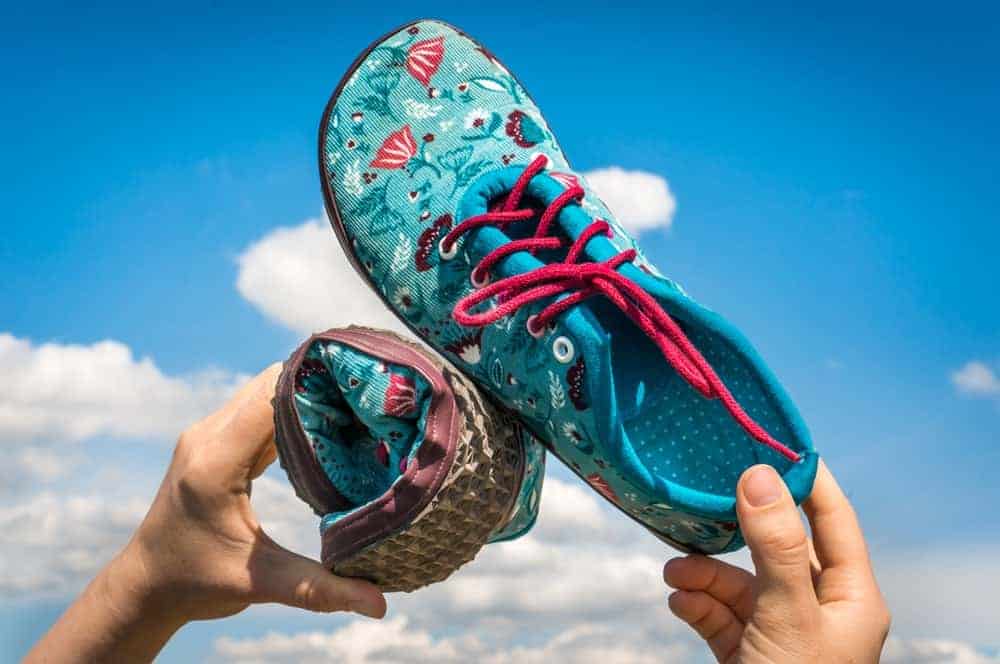
Barefoot shoes are a bit of a misnomer. It is technically impossible to be both barefoot and wearing shoes at the same time. However, these minimalist shoes are designed to be as close to not wearing shoes as you can get while still wearing shoes.
Minimalist shoes actually have their own rating scale.
It’s determined by:
- Flexibility – higher flexibility is desirable
- Drop – low or zero drop
- Stack height – lower stack height
- Weight – lower weight
- Stability control devices – few to none are desirable
Barefoot shoes are intended to interfere with the foots natural movement as little as possible. The less interference the shoe causes, the higher its score.
Drop is one of the most mentioned components. A typical shoe has 10-12 millimeters of heel drop. This is because of padding at the heel, which raises it higher than the forefoot.
Minimalist shoes have an 8mm drop or zero drop, which means they have little padding at the heel, or minimal padding across the entire shoe, keeping your foot even.
Why Barefoot Shoes?
The theory behind barefoot shoes is that the support provided by athletic shoes is actually counterproductive. If you break your arm, you’ll need the support of a cast. When in the cast, the muscles atrophy. Once it heals, you undergo physical therapy to strengthen the muscles again. The goal is to strengthen the muscles over time until no support is needed.
Athletic shoes provide support, but this may mean that the muscles that would provide support if they were stronger have no need to strengthen. The shoe does the work that would otherwise be done by the muscles themselves.
Proponents of barefoot shoes enjoy the natural gait and feel of the terrain. In fact, scientists believe that shoes affect the feedback given to the brain, and that can create a less precise gait. Feeling the terrain may improve your running.
Barefoot runners are at a lower risk of knee injuries, and a higher risk of calf and Achilles tendon injuries. It’s thought this is because we aren’t accustomed to running barefoot.
It goes back to the support of the shoe changing our gait and weakening certain muscles. If you are considering transitioning to this type of shoe, start with a minimalist shoe with some support or stick to short distances at first.
Are Shoes Necessary?
Why wear shoes at all? There are a few reasons to choose even the most minimalist barefoot shoe over running barefoot.
First is the most obvious, materials on the ground can cause cuts or injuries to the foot. Temperature is another consideration. Pavement can reach temperature s high enough to cause burns, and extreme cold can damage feet as well.
Lastly, minimalist shoes offer a small amount of cushioning. This can prevent soreness and overuse injuries, without affecting the natural movement of the foot.
Of course, barefoot purists may choose to run without shoes. However, you can still reap the benefits of a lightweight zero-drop shoe that provides protection from the ground.
Toed Shoes
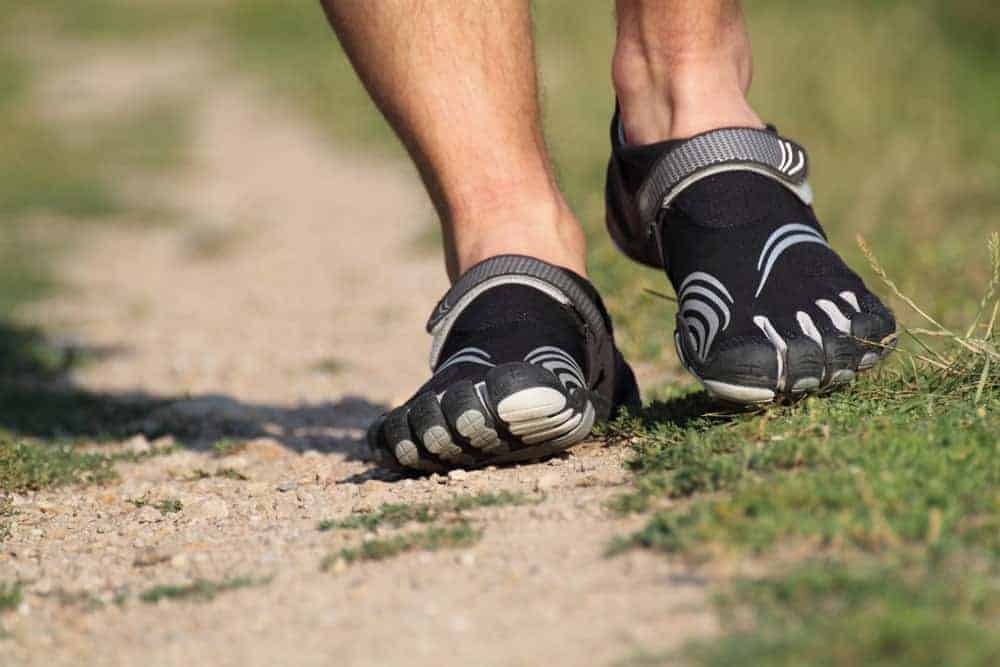
Toed shoes are a subset of barefoot shoes. Most barefoot shoes neglect one aspect of running shoeless. Toe spacing and movement.
Toes aren’t something we give a lot of consideration to. Frankly, they aren’t that attractive, even for feet. Their usefulness is often overlooked for the sake of aesthetics.
Toes help provide stability, grip the ground, and affect the spring in your step. They will naturally change position based on your needs at the moment, without you giving them any consideration.
Toed shoes have individual pockets for each toe. This allows them to move as they would barefoot, individually, while still providing protection.
They look and function similar to gloves. Most people find them unsightly, but proponents claim they are the best thing you can do for your feet, if not your eyes.
Running Shoes for Women and Men FAQs
What if more women designed running shoes?
Most running shoes have traditionally been designed by men. There’s a claim that women should design shoes for women because women know what women want and need in a shoe.
Does who is designing the shoe really matter? What matters is that the industry provides innovative options for women’s footwear that is designed for their feet and movement.
The free market means the best option should make the most profit because it will sell best. Research on foot shape and gait can be conducted by men just as it can by women. Perhaps if more women designed shoes, the shoes would be better designed for women, which could raise the industry standard.
What should women look for when choosing a running shoe?
The first thing a woman should look for is fit. Women have a narrower heel and wider ball compared to men, so shoes should be designed to accommodate this. Many women find shoes slip on their heels and are tight on the forefoot. A snug fit all the way around is best.
The arch is also important. If you want a supportive shoe, you should look for one that offers enough arch support. You should have plenty of room in the toebox.
What should men look for when choosing a running shoe?
Look for a shoe that offers plenty of toe room, at least one thumb’s width. It should fit snugly and not slip at the heel. Your foot should feel centered and stable in the shoe.
Try on several pairs and see which pair is most comfortable. You should also choose the shoe based on what you are looking for in a shoe.
Can you wear shoes for the opposite gender?
Generally, shoes designed for your gender will provide the best fit. However, one size doesn’t fit all, and some people find a better fit with shoes designed for the other gender.
You can wear men’s or women’s shoes, as long as there’s a size available for your feet.
What’s the sizing equivalent for a 7 men’s shoe in women’s?
To get the equivalent, add 1 1/2 size to the men’s shoe for the women’s equivalent, and subtract 1 1/2 size for the men’s equivalent.
A men’s size 7 is equivalent to a woman’s 8/12. The width should stay the same, but it is helpful to try different widths, especially if your usual width is tight or loose.
Can some running shoes slow you down?
Running shoes can slow you down. For every 3.5 ounces or 100 grams, you burn another 1% of energy. In theory, this should make you 1-second slower.
Studies have shown similar results. Times are .78-1.1-second loner for every extra 100 grams of shoe weight. This effect is lessened at higher speeds and more pronounced at lower speeds.
It is important to note that shoes can also help you run faster as well. It all comes down to cushioning. There’s a sweet spot where the cushioning maximizes speed without being heavy enough to cause a significant slowdown. This is why race shoes are typically very lightweight.
What is gait and why does it matter?
Gait is always a pattern of observed locomotion. In terms of running, gait is the pattern of motion your legs and feet make when you run.
Gait is important for reducing injury risk and increasing efficiency. Running shoes are designed for the three different gait patterns known as pronation.
However, there’s some debate over whether choosing shoes based on pronation actually makes a difference. 80% of shoes are neutral, so they offer a much wider selection than stability and motion control shoes.
Do women or men win more races?
You might be surprised to learn that women cross the finish line more often than men. 57% of race finishers are women, and women runners are up 25%, compared to 7% for men.
In head to head marathons, men usually come out on top, despite more women going the distance. When you look at ultra-endurance racing, however, women can take the lead. In recent years women have taken a few surprising wins, coming in 10-12 hours ahead of the closest opponent.
How do women run differently?
We’ve already looked at the q angle, but there are other differences in how women run. Women are more flexible, which is both an advantage and disadvantage.
They have more body fat, which seems to be an advantage in endurance races. Their bodies are able to use oxygen more efficiently.
They are also better at pacing themselves, which might explain why women are more likely to finish a race.
Women have different dominant muscle groups than men. They are quad dominant, which means they have strong quad muscles and weaker hamstrings. They also have less core strength. This can increase injury risk, but women tend to become more stable with training over time.
How do I know when it’s time for new running shoes?
Running shoes are a lot like tires on a car. When they need to be replaced depends on terrain, wear patterns, running style, and weight.
The tread, cushioning, and support of the shoe wears over time. The shoe won’t be able to provide the same level of support and protection once it begins to break down.
Generally, they should be replaced every 300-400 miles. If you have an uneven gait or run on uneven terrain, they should be replaced at 300 miles or when you notice significant wear. If you are heavier, cushioning will wear out sooner, so you’ll want to replace them on the lower end as well.
If you begin to notice discomfort that wasn’t present before, your shoes may be worn and in need of replacement.
What is plantar fasciitis?
Plantar fasciitis causes inflammation in the plantar fascia. The plantar fascia is a band of tissue that connects your heel to your toes.
It typically causes stabbing pain with movement, particularly first thing in the morning.
Runners are at a higher risk of developing plantar fasciitis. The fascia supports the arch of the foot and absorbs shock. Shock can cause small tears in the fascia which get worse over time.
Are running shoes good for walking?
Running shoes are good for walking. They are designed with the latest materials and technology. Since walking shoes don’t need to absorb as much impact, they are often less supportive and focus on comfort.
The technology used in creating running shoes is often not present in walking shoes. This means that running shoes are good for walking, but walking shoes shouldn’t be used for running.
Do running shoes stretch?
If you are checking the shoes that you’ve been wearing, look at the toe of the shoe. It should not be bulging or collapsed.
Next, look at the sock liner. The entire outline of your foot should be present on the liner. If there’s a cut-off, the shoe is too small.
If you are choosing new shoes, be sure that the sole is wider than your foot all the way around. the entire shoe should feel snug but not tight around your foot. There should be space between the toes and the end of the shoe.
It’s also helpful to try on shoes later in the day. Feet expand throughout the day, so shoes that fit well in the morning may be too tight after you begin running and feet expand.
Running shoes can stretch, but this means you didn’t have the proper fit to begin with. When shoes are too narrow, the foot hangs over the sole. The foot is supported by the upper, which eventually breaks down because it’s not meant to support your weight. When a shoe fits properly, it won’t stretch.



